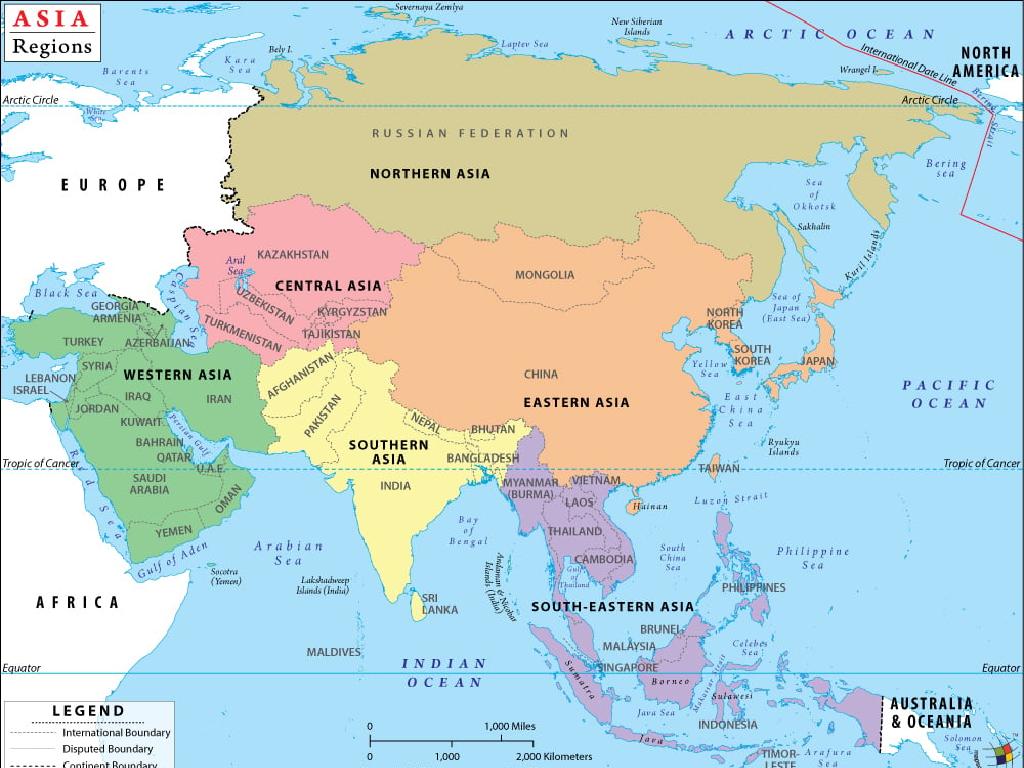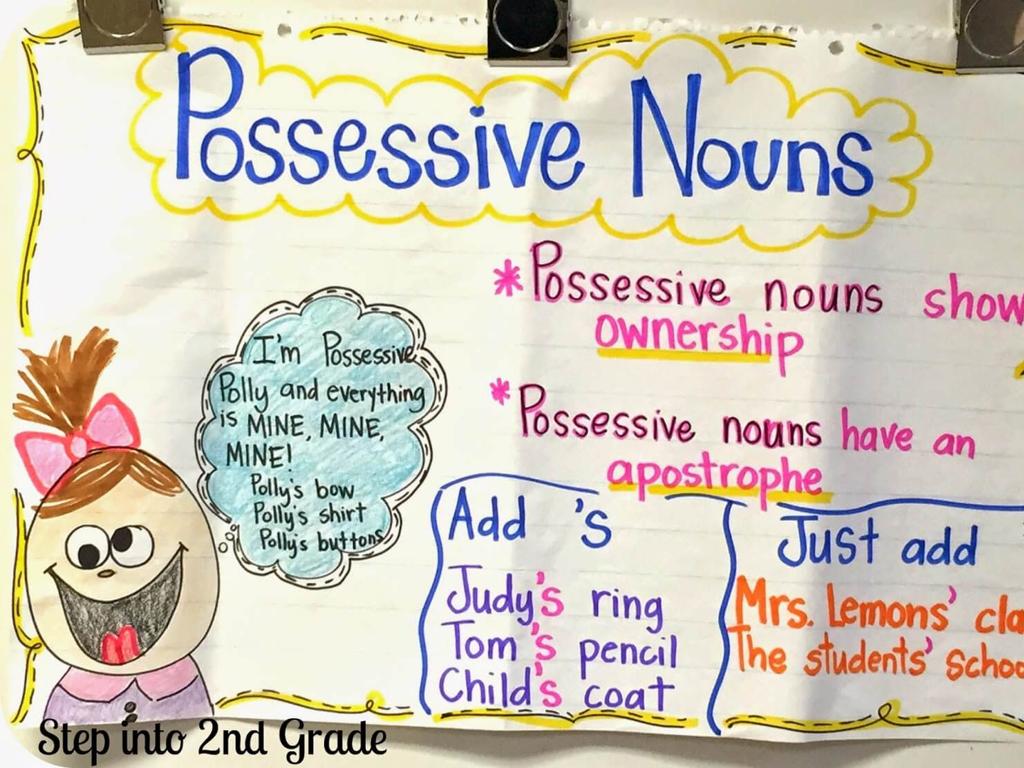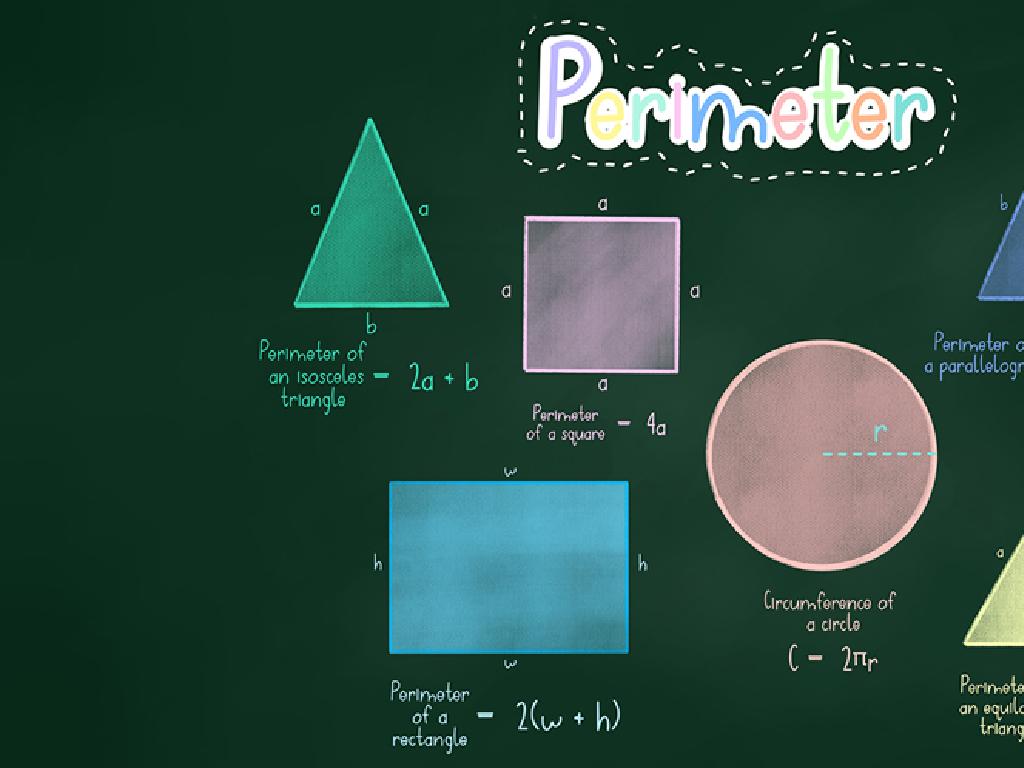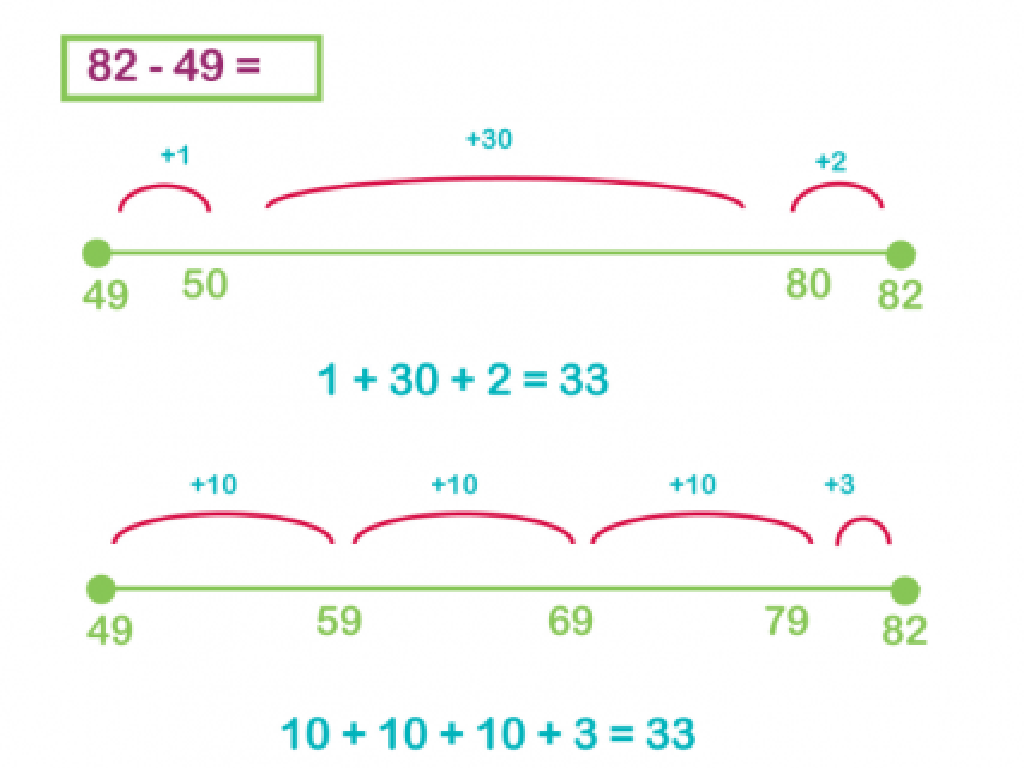Fractions Of A Number: Model And Multiply
Subject: Math
Grade: Fifth grade
Topic: Understand Fraction Multiplication
Please LOG IN to download the presentation. Access is available to registered users only.
View More Content
Welcome to Fractions: Multiplying by a Number
– Fractions represent parts of a whole
– Today’s focus: Fractions of a number
– Understand how to find a part of a quantity using fractions
– Visualizing fraction multiplication
– Use area models or number lines to see the multiplication
– Practice with real examples
– Example: 1/2 of 8 is 1/2 multiplied by 8, which equals 4
|
This slide introduces the concept of fractions as parts of a whole and how to multiply a whole number by a fraction. Begin by explaining that fractions are a way to represent a quantity that is not whole, using the analogy of a pizza cut into equal slices. Today’s lesson will focus on understanding how to find a fraction of a number, which is a key skill in many real-world applications. Demonstrate how multiplying fractions can be visualized using area models or number lines, which helps students grasp the concept more concretely. Provide real-life examples, such as finding half of a quantity in cooking or shopping discounts. Encourage students to practice with examples and prepare for hands-on activities where they can apply what they’ve learned.
Understanding Fractions
– A fraction represents part of a whole
– Numerator and denominator explained
– Top number (numerator) shows how many parts we have. Bottom number (denominator) shows how many equal parts the whole is divided into.
– Example: 1/2 of a pizza
– If a pizza is cut into 2 equal slices, 1/2 means we have one of those slices.
– Visualizing fractions in everyday items
– Think of a chocolate bar divided into equal squares. Each square is a fraction of the bar.
|
This slide introduces the concept of fractions to fifth-grade students. Begin by explaining that a fraction represents a part of a whole, something they encounter in daily life. Clarify the roles of the numerator and the denominator, using simple terms: the numerator is the number of parts you have, and the denominator is the total number of equal parts that make up the whole. Use a familiar example, like a pizza cut into equal parts, to illustrate the concept of a fraction. Encourage students to visualize fractions by relating them to everyday items, such as pieces of a chocolate bar, to help them understand that fractions are all around them. This foundational understanding will be crucial as they learn to model and multiply fractions.
Fractions in Daily Life
– Fractions are all around us
– Used in cooking and measuring
– Like 1/2 a cup of sugar in recipes
– Dividing objects into parts
– Such as splitting a pizza into 8 pieces
– Think of your own examples
– Maybe sharing treats with friends?
|
This slide aims to show students that fractions are not just mathematical concepts, but are also a part of everyday life. Highlight the use of fractions in cooking, such as following a recipe that requires half a cup of an ingredient. Discuss how fractions are used in measuring lengths, weights, and volumes. Explain dividing objects or sets into parts, like cutting a pizza into equal slices or sharing a pack of stickers equally among friends. Encourage students to think of and share their own examples where they have encountered fractions outside of the classroom. This will help them relate to the concept of fractions as something tangible and practical.
Modeling Fractions: Visual Aids
– Visual models clarify fractions
– Fraction bars and number lines
– Tools for representing fractions visually
– Modeling 1/3 on a number line
– Divide a number line into 3 equal parts; 1/3 is one part
– Practice with different fractions
– Try modeling 1/4, 1/2, and 2/3 on your own
|
This slide introduces visual models as a method to help students understand the concept of fractions more concretely. Emphasize the use of fraction bars and number lines as effective tools for modeling fractions. Demonstrate how to model 1/3 on a number line by dividing it into three equal parts and highlighting one of those parts. Encourage students to practice with different fractions to solidify their understanding. Provide examples and guide them through the process of dividing number lines into equal parts to represent various fractions. This activity will prepare them for understanding how to multiply fractions by numbers and other fractions in future lessons.
Multiplying Fractions by Whole Numbers
– Understanding fraction multiplication
– Multiplying a fraction by a whole number scales up the fraction.
– Example: Multiplying 1/4 by 4
– 1/4 x 4 equals 4/4, which simplifies to 1 whole.
– Visualizing with fraction bars
– Fraction bars help us see how many times we take a fraction part.
– Converting to a whole number
– When the numerator equals the denominator, it equals 1 whole.
|
This slide introduces the concept of multiplying fractions by whole numbers. Start by explaining that when we multiply a fraction by a whole number, we are essentially adding the fraction to itself that many times. Use the example of 1/4 x 4 to show that multiplying by 4 means taking 1/4 four times, which gives us 4/4, or 1 whole. Use fraction bars to provide a visual representation of this concept, which can help students grasp the idea more concretely. Emphasize that when the numerator and denominator are the same, it represents a whole. Encourage students to use fraction bars or draw models to visualize the multiplication process. This will prepare them for more complex problems involving fractions.
Multiplying Fractions by Fractions
– Understanding fraction multiplication
– Example: Multiplying 1/2 by 1/3
– 1/2 x 1/3 means half of one-third
– Using area models for visualization
– Area models show how parts of a whole are combined
– Practice with different fractions
– Try multiplying 2/5 by 3/4 and use an area model
|
This slide introduces the concept of multiplying fractions by fractions, which is essentially finding a fraction of a fraction. Start with a simple example like 1/2 x 1/3 to show that we’re looking for half of one-third. Use area models to help students visualize the process, as it can be abstract. Area models are particularly effective because they allow students to see the fractions as parts of a whole and how these parts multiply to form a new fraction. Encourage students to practice with different fractions and use area models to solidify their understanding. This will prepare them for more complex problems and ensure they grasp the concept of fraction multiplication.
Fraction Multiplication Practice
– Practice: 1/2 x 6
Half of 6 is 3. So, 1/2 x 6 = 3
– Practice: 3/4 x 4
Three-fourths of 4 is 3. So, 3/4 x 4 = 3
– Practice: 2/3 x 3/5
Multiply numerators and denominators: (2×3)/(3×5) = 6/15, which simplifies to 2/5
– Class discussion of solutions
|
This slide is designed for a collaborative classroom activity where students will practice multiplying fractions with whole numbers and other fractions. Begin by solving the first problem as a class, demonstrating that multiplying by 1/2 is the same as finding half of a number. Continue with 3/4 x 4, showing that finding three-fourths is like dividing the whole into four equal parts and taking three of them. For the fraction multiplied by a fraction, guide students through the process of multiplying the numerators together and the denominators together, then simplifying if possible. Encourage students to discuss their problem-solving strategies and understanding of the concept with the class. This will help reinforce their learning and allow them to see different methods of reaching the same solution.
Class Activity: Fraction Multiplication Art
– Create fraction art by multiplying
– Use colored paper for fractions
– Each color represents a different fraction, like 1/2 or 1/4
– Share your art with the class
– Explain the fractions used
– Tell us how you multiplied fractions to create your art
|
This activity is designed to help students visualize and understand the concept of multiplying fractions. Provide students with colored paper cut into various fractional parts. They will use these to create a piece of art, for example, by combining two 1/2 pieces to show 1/2 x 2. Encourage creativity and ensure they understand that the colors represent different fractions. After creating their art, students will share their work with the class and explain the fractions they used and how they multiplied them. This will reinforce their understanding and allow them to see practical applications of fraction multiplication. Possible variations of the activity could include creating patterns, designing a fractional landscape, or even a collage that represents a real-world scenario.
Wrapping Up: Fractions Multiplication
– Congratulations on learning fraction multiplication!
– Homework: Finish the multiplication worksheet
– Practice problems to solidify your skills
– Create your own fraction art
– Use fractions to design a creative art piece
– Share your art and understanding next class
– Be prepared to explain your art’s fraction concepts
|
Today’s lesson focused on understanding how to multiply fractions. For homework, students are tasked with completing a worksheet that provides additional practice to help reinforce the concepts learned in class. Additionally, students are encouraged to create an art piece using fractions, which will allow them to apply their knowledge creatively. This activity not only makes learning fun but also helps in visualizing fraction multiplication. In the next class, students will have the opportunity to share their artwork and explain the fraction concepts used, promoting peer learning and confidence in their mathematical skills.






